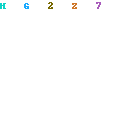ChickenPox
Chickenpox (varicella) is a common contagious illness caused by a type of herpes virus. It easily affects children between 5-10 years of age. It is easily passed between members of families and school classmates through airborne particles, droplets in exhaled air, and fluid from the blisters or sores. It also can be transmitted indirectly by contact with articles of clothing and other items exposed to fresh drainage from open sores. Chickenpox is usually more severe in adults and very young infants than children. Winter and spring are the most common times of the year for chickenpox to occur. Chickenpox is very highly transmittable.
2.0 Causes of ChickenPox
Straightforwardly, the varicella-zoster virus (VZV) causes chickenpox. The disease is highly infectious -- over 90% of non-immune individuals will develop chickenpox following exposure. VZV is communicable by both direct skin-to-skin contact and via respiratory droplets (for instance coughing, sneezing) from the infected individual. While the average incubation period from viral exposure to onset of symptoms is 12-14 days, symptoms may appear as early as 10 days or as late as 21 days after exposure to the virus.
3.0 Symptoms and signs
There’re plenty of obvious signs when a person suffering from chickenpox. In this case, most children with chickenpox have the following symptoms before the rash appears:
- Fever : which can up to 102 F
- Headache
- Stomach ache
- Abdominal pain or loss of appetite
- General feeling of unease and discomfort (malaise) or irritability
The chickenpox rash occurs about 10 to 21 days after coming into contact with someone who had the disease. The average child develops 250 to 500 small, itchy, fluid-filled blisters over red spots on the skin. The rash can be seen in 3 phrases:-
1. Raised pink or red bumps (papules), which break out in different spots over several days
2. Fluid-filled blisters (vesicles), forming from the raised bumps over about one day before breaking and leaking
3. Crusts and scabs, which cover the broken blisters and take several more days to heal
Most pox will not leave scars unless they become infected with bacteria from scratching.
4.0 Treatment
Normally, Medications that fight the chickenpox virus are available but not given to everyone. To work well, the medicine usually must be started within the first 24 hours of the rash. Anyway, there’re some medicine which work for the symptoms of chickenpox.
=> Acetaminophen (Tylenol) can be used to decrease the fevers and aches often associated with the initial presentation of the viral infection.
=> Frequent oatmeal baths (Aveeno) can decrease the itching associated with chickenpox.
=> Soothing lotions and moisturizers (calamine) can be applied to the rash.
=> Diphenhydramine (Benadryl) or other antihistamines can control the itching.
=> Antiviral medication (Zovirax) can be used to shorten the duration of the infection. This medication has only been shown to be affective if started within one to two days of onset of the rash associated with chickenpox, mostly for severe cases.
· Do take precautions not to spread the infection. - Symptoms usually develop 8 to 21 days after exposure and the infected person can spread the infection for up to 3 days before the rash appears and until the last spot has crusted over.
· Do make yourself as comfortable as possible. – Take a warm baths two or three times a day with baking soda or oatmeal products will help to ease the itching. Remember to pat the skin dry.
· Do prepare yourself to be very patient as you can become very irritated by the constant itchy feeling.
· Do try to be calm as possible - reading, watching TV etc, as energetic activities may cause the skin to sweat and become uncomfortable.
· Do treat the spots with a calming lotion such as Eurax to relieve the itching.
· Don't scratch! - Scratching can cause scarring. If necessary use mittens and cut your nails.
· Don't spend time in the contact of the eldery - the elderly are more prone to developing shingles when in contact with chickenpox.
· Don't take aspirin based products if you have a fever and chickenpox as this has been associated with the development of Reyes Syndrome in later years.
The ways that you can take to prevent chickenpox is chickenpox vaccine (Varivax). Although the vaccine doesn’t immune a person from chickenpox, it provides nearly 90% of protection from the virus. Young and older children, unvaccinated adults are recommended to get the vaccine. In this case, there’re some types of people are not approved to get the vaccine, for instance pregnant woman, people with weakened immunity, and also people who allergic to gelatin or the antibiotic neomycin. Many studies have consistently proved that the vaccine is safe and effective. Side effects are generally mild and include redness, soreness, swelling and, hardly, small bumps at the site of the shot. Anyhow, if you've had chickenpox, you don't need the vaccine. A case of the chickenpox usually makes a person immune to the virus for life. It is possible to get chickenpox more than once, but this isn't common.
I had chickenpox before, during my age of 7. Honestly, I barely remember the feelings or the pain I’ve been through. What I can recall is my friend, Tom who always hanging around with me had chickenpox after I was healed. I feel so sorry to him, as I believe that this disease is so contagious that it caused Tom to suffer for 2 weeks. Yet today, thanks to the advent of the varicella vaccine, chickenpox is relatively rare.
